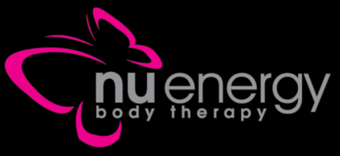The Incredible Benefits of True Pilates
Pilates is far more than just an exercise class. The method was designed to improve or correct an individual’s balance, strength, alignment, and whole body. It is a rehabilitation practice that just happens to also be a very trendy way to work out. Perhaps, its original intention is clouded by that very fact.
As a ballet dancer of 20 years, and an experienced Pilates, Garuda, and Barre Teacher, I am passionate about using physical movement to rehabilitate the body. Here’s why I love the traditional Pilates form of exercise and believe it is the best practice for my clients.
Pilates Who?
The Pilates method was founded by physical trainer Joseph Pilates as rehabilitation for wounded British soldiers in WWI. A true pioneer, Pilates then went on to help ballerinas return to dancing using equipment that he designed. Society women soon followed. Now, whether using the trainer’s signature apparatus or his mat routine that develops and conditions the whole body, Pilates is for everyone.
This is the form of Pilates I do: exercise specific to the individual. I achieve this through tailoring classes to suit the needs of each client in the session, either modifying movements (making them easier) or offering a variation (making them more challenging) as required. My focus is on the client’s needs so they can improve their body from a rehabilitation point. I educate my clients through Joseph’s traditional repertoire.
A Balancing Act
Now, rehabilitation doesn’t necessarily mean recovering from an injury. It may be due to an imbalance in the body due to one side being more dominant, or it could mean certain muscles or joints are weaker than others. Many factors influence a person’s need for rehabilitation, including age, history, work, sports, and predisposing conditions.
Many places that say they do Pilates are actually just doing workouts!
In fact, true Pilates involves the teacher ensuring each student is doing the exercise correctly: engaging muscles, displaying alignment, and distributing weight. True Pilates focusses on specific movements, breathing technique, and much more that unfortunately gets left out in modern interpretations of the method. This simply cannot be done in a mass class environment.
Back to Basics
I offer small group training so we can focus on the detail. We concentrate on technique, strength, mobility, flexibility, endurance, movement, and grace. Sometimes, I’ll include small props in class to add extra challenge to, or assistance with, certain movements.
Don’t get me wrong! Pilates can certainly be a workout; just ask one of my clients!
Christine: “Every session is different and varied but I am guaranteed a total body work out every time… My strength and fitness have improved so much.”
But it must be done correctly as Joseph intended it: controlled, precise, with specific breathing patterns and flowing movement, concentration of every move, and most of all, centring of the body and mind.
The secret to overcoming feeling weak and wonky for good is consistency. Ideally, Pilates should be practiced 2-3 times a week. This helps the body remember balance and exercise flexibility, with the guidance of your teacher.
Why Do I Do It?
Having trained in dance for two decades, I have the technique, passion, knowledge and understanding of the physical body. I have embodied the beauty of what the body is capable of and love to share my learnings and skills with others. When I was younger, I always wanted to be a ballet teacher. But life as a single parent did not allow for this. Luckily, I have now created a community and studio in which I can teach, which is my passion.
I enjoy helping people get their bodies moving better and feeling better so that they can move and feel better in all areas of life. If you have something that you know you need to work on to improve, I am more than happy to help you with that. I invite you to book a session with me to discuss your needs.


